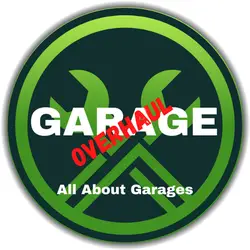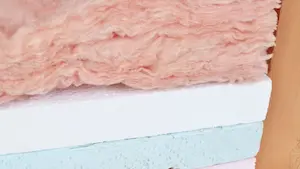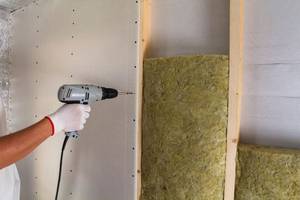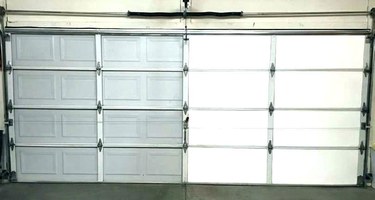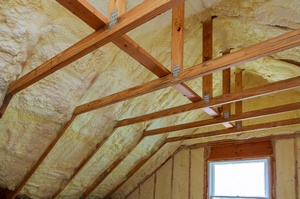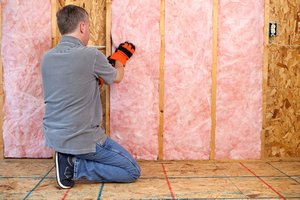Insulate Your Garage Floor for a More Comfortable and Energy-Efficient Space
This post contains affiliate links.
Are you beginning to feel like your costs are rising, and your garage is uncomfortable? It may be time to add insulation to your garage floor.
Insulating the garage floor improves comfort, reduces energy costs, improves air quality, and reduces noise. Install insulation on the walls, ceiling, and garage door to enhance the insulation in your garage further.
You can take on the task independently after choosing the type of material you want for your insulation.
This article goes into further detail and gives you other tips.
Why Are Garage Floors Insulated?
We wonder why anybody would want to go through the extra hassle of insulating a garage floor. There are multiple reasons why people choose to make this addition. Let’s look at these in detail.
Improved Comfort
Insulating your garage floor will help keep your garage’s interior more comfortable, even during winter. This will make it easier to spend time in your garage, whether you’re working on a project or just relaxing.
Reduced Energy Costs
By insulating your garage floor, you’ll reduce the amount of energy that is lost through the floor. This can lead to lower energy bills, as the heating or cooling system won’t have to work as hard to keep the garage’s interior at your desired temperature.
Improved Air Quality
Having a properly insulated garage floor will reduce the air infiltration and dust that enters your home from the garage. This can help to reduce allergens and improve the air quality inside your home.
Reduced Noise
Adding insulation to your garage floor can reduce the amount of noise transferred from the garage to the rest of your home. This can make it easier to enjoy your home without being disturbed by the sound of vehicles coming and going from your garage.
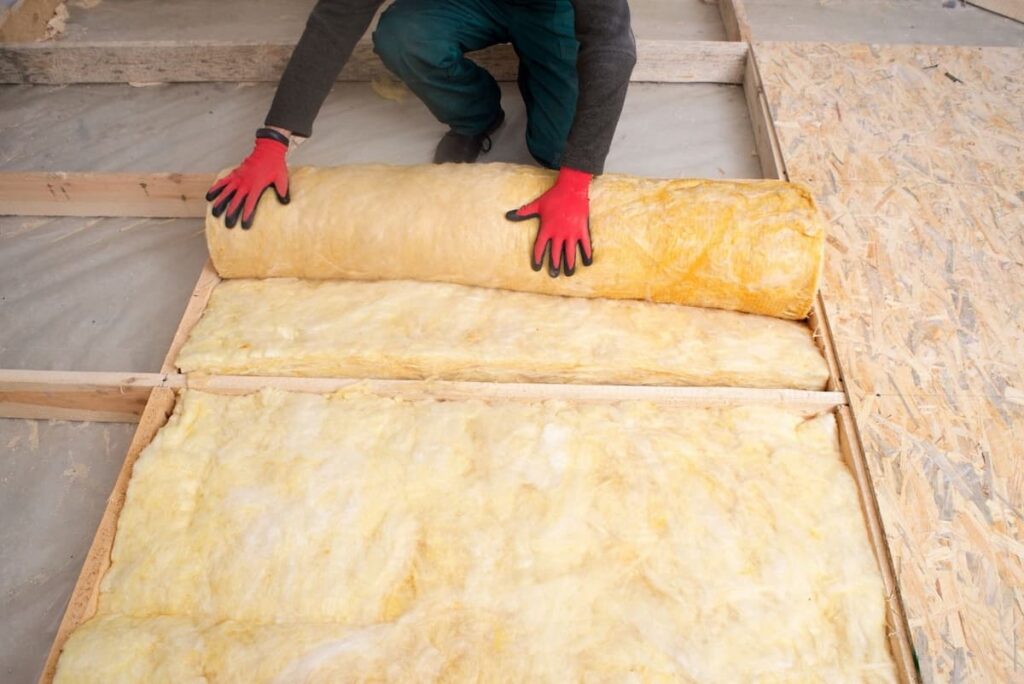
Types Of Garage Insulation
Garage insulation can be installed in various forms, depending on the homeowner’s needs. Some of the most popular types of insulation for garages are discussed below.
Fiberglass Batts
Fiberglass batts are an economical and easy-to-install option for insulating garages. They come in rolls and have a paper backing that allows them to be easily cut to fit the dimensions of your garage.
Spray Foam
Spray foam insulation is more expensive than fiberglass batts but offers superior insulation performance. It is sprayed directly onto the walls and ceiling of your garage, filling any gaps or crevices.
Rigid Foam Board
A rigid foam board is a rigid foam material installed directly onto your garage’s walls and ceiling. It is more expensive than fiberglass batts but offers better insulation performance.
Cellulose or Fiberglass Blown-In Insulation
This type of insulation is blown into the walls and ceiling of your garage using a specialized machine. It is an economical option that offers good insulation performance.
Preparation For Garage Insulation
Like any other construction task, prepping the surface before installation is necessary. Ensure that you consider the following steps before you begin insulation.
- Inspect the condition of the walls and ceiling of your garage. Make sure there are no signs of rot, water damage, or other structural damage.
- Remove any existing insulation, if necessary.
- Check the condition of the existing vapor barrier, if any.
- Install a vapor barrier on the walls and ceiling of your garage using spray foam insulation or roll insulation.
- Secure the vapor barrier with tape and caulking.
- Install a layer of rigid foam insulation to the walls and ceiling.
- Secure the foam insulation to the walls and ceiling with nails and screws.
- Finish the walls and ceiling with drywall or other wall covering.
- Seal any cracks or gaps in the walls and roof with caulk.
- Add a layer of insulation to the floor if desired.
How To Add Insulation To The Garage Floor?
Below are detailed instructions to take to install floor insulation in your garage.
- Determine the type of insulation you need. The type of insulation you use will depend on the flooring you have installed in your home.
- Measure the area of the floor you will be insulating. This is important because you must purchase the correct insulation for the job.
- Purchase the insulation. If you are purchasing roll insulation, it should come in pre-measured lengths that can easily be cut to the size of your floor.
- Remove any furniture or items from the area you will be insulating. This will make the job easier and ensure the insulation is installed correctly.
- Install the insulation. If you’re using roll insulation, cut it to size and place it between the floor joists. If you’re using foam insulation, cut it to size and place it between the floor joists. Secure the insulation with screws or nails.
- Cover the insulation with a vapor barrier. This will help ensure the insulation is protected from moisture and other elements.
- Replace any furniture or items that you had removed from the area.
- Enjoy your new and improved floor insulation!
For more assistance, watch this video: How to Build a Floor – Insulation and Screed
How To Insulate The Garage?
Here’s how you can insulate the garage.
- Install insulation in the walls and ceiling. Use a vapor barrier and install R-13 fiberglass insulation in the walls and R-19 fiberglass insulation in the ceiling.
- Add weather stripping around the garage door. This will help seal the gap between the door and the frame, preventing drafts.
- Install a garage door opener with a timer. This will allow you to set the door to close at a specific time each day, which helps keep the temperature in the garage more consistent.
- Install a door sweep. This will help keep the cold air from entering the garage from underneath the door.
- Install a door panel kit. This will help insulate the garage door and keep the temperature more consistent.
- Install a fan. This will help circulate the air and keep the temperature more consistent.
- Install a dehumidifier. This will help keep the humidity in the garage at a comfortable level.
How To Preserve Garage Insulation?
Garage insulation is expensive and takes time to install. No homeowner would want to let the effort go to waste; hence, steps for preservation must be taken to ensure the longevity of the insulation.
Below we discuss some steps to take.
- Ensure the insulation has a vapor barrier: The vapor barrier is a material that helps to keep the moisture out and helps to prevent the growth of mold and mildew.
- Use a sealant: Applying a sealant to the insulation will help to keep it in place and will also help to protect it from moisture and other elements.
- Check for drafts: Inspect your insulation for any gaps or cracks that could lead to cold air entering your garage.
- Insulate the walls: Using a foam insulation board to insulate your garage walls can help reduce energy costs and keep your garage warmer in the winter and cooler in the summer.
- Keep the area clean: Make sure to regularly clean your garage to ensure no debris or dirt is collecting on the insulation.
- Inspect for pests: Inspect any pests that could be damaging and nesting in the insulation.
Also, check the other articles on our insulation series covering the whole garage here.
And series covering garage flooring here.
Final Thoughts
Insulating the garage floor is very beneficial for homeowners. Ensure that you take the necessary precautions before you start insulating. Moreover, remember to secure everything in place after you are done.
